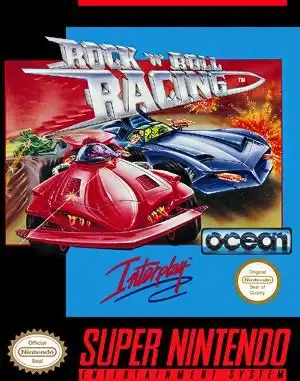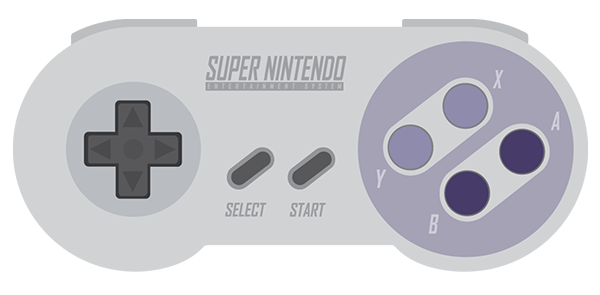Remember the days when racing wasn't just about speed, but about blowing up your opponents while headbanging to classic rock riffs? If so, you likely remember the absolute mayhem and pure fun that was Rock n’ Roll Racing. Developed by Silicon & Synapse (the studio that would become Blizzard Entertainment) and published by Interplay, this isometric combat racer hit the SNES and Genesis in the early 90s and carved out a unique niche in retro gaming history.
It wasn't just a racing game; it was a spectacle. With its unique blend of destructive vehicular combat, upgradeable cars, diverse alien planets, and, of course, that legendary licensed soundtrack, Rock n’ Roll Racing delivered an experience unlike anything else on 16-bit consoles. Let's crank up the volume and take a trip down memory lane.
What Made Rock n’ Roll Racing Rock So Hard?
At its core, Rock n’ Roll Racing put four drivers on an isometric track, battling it out for first place. But this wasn't your grandma's Sunday drive. The game actively encouraged aggression. Wrecking opponents wasn't just a tactic; it was rewarded with bonus cash!
The tracks themselves were varied and often treacherous, spanning different planets with unique environmental hazards like magma or slime. Power-ups littered the course, offering temporary boosts, mines, missiles, or much-needed health pickups. Success required a mix of driving skill, strategic weapon use, and knowing when to blast past (or through) the competition.
Adding to the chaos was the unforgettable commentary provided by "Loudmouth Larry" Huffman. His over-the-top calls – "Red has been DEREZZED!" or "Let the carnage begin!" – were pure gold and cemented the game's wild, arcade-like atmosphere.
The Soundtrack: More Than Just Background Noise
Perhaps the most iconic element of Rock n’ Roll Racing was its soundtrack. Featuring instrumental versions of classic rock and heavy metal anthems, the music wasn't just background noise; it was the pulse of the game. Blasting down the track while "Paranoid," "Highway Star," or "Bad to the Bone" played was an absolute rush.
This was a big deal for a 16-bit game at the time. While licensing issues have sometimes complicated re-releases (like the Battle.net demo having replacement music), the original console versions are legendary for this feature. It truly lived up to its name, making every race feel like a high-octane music video.
Key tracks included:
- "Paranoid" by Black Sabbath
- "Highway Star" by Deep Purple
- "Peter Gunn Theme" by Henry Mancini
- "Born to Be Wild" by Steppenwolf
- "Bad to the Bone" by George Thorogood
(Note: "Radar Love" by Golden Earring was exclusive to the Genesis version).
Gear Up for Destruction: Upgrades and Strategy
Between races, players could visit the shop using the cash earned from winning and wrecking. This added a strategic layer, allowing you to upgrade your vehicle's armor, engine, tires, and suspension. More importantly, you could enhance your weaponry – better missiles, more powerful lasers, or trickier mines.
Choosing the right upgrades for the next planet's terrain or your preferred combat style was crucial. You could also buy entirely new cars, though this meant losing your previous upgrades – a tough decision that added weight to your progression through the leagues and planets.
Advancing required finishing in the top three to earn enough points. Failing to qualify meant repeating the division, forcing players to master tracks and optimize their car setup.
Rock n’ Roll Racing Today: How to Play
Want to relive the glory days or experience this classic for the first time? Thankfully, it's easier than digging out your old console and cartridges.
The best modern way to play Rock n’ Roll Racing is through the Blizzard Arcade Collection. Released in 2021 for PC and consoles, this collection includes the original game alongside a "Definitive Edition." The Definitive Edition boasts:
- Higher resolution graphics
- Up to 4-player split-screen multiplayer
- Save states and replays
- Graphic filters
- Improved audio options, including re-recorded commentary from Larry Huffman himself!
This collection is available on various platforms and provides an excellent, officially licensed way to experience the game with modern conveniences.
A Legacy of Loudness and Lore
Rock n’ Roll Racing wasn't just a hit; it was influential. Its blend of racing and combat, coupled with licensed music and memorable commentary, left a lasting impression. While sequels like Rock & Roll Racing 2: Red Asphalt on PlayStation took a different direction, and unauthorized remakes like Motor Rock had brief appearances, nothing quite captured the magic of the original 16-bit classic.
It remains a beloved title for many retro gamers, a perfect example of 90s attitude, creative game design, and the sheer fun of blowing things up to a killer soundtrack.
Rock n’ Roll Racing FAQ
Q: What platforms was Rock n’ Roll Racing originally released on? A: It originally came out on the Super Nintendo (SNES) and Sega Mega Drive/Genesis in the early 1990s. A Game Boy Advance port was released later.
Q: Can I play Rock n’ Roll Racing on modern systems? A: Yes! The easiest way is via the Blizzard Arcade Collection, available on PC, PlayStation, Xbox, and Nintendo Switch.
Q: Who is the commentator in the game? A: The iconic, enthusiastic voice belongs to "Loudmouth Larry" Huffman. He even re-recorded lines for the Definitive Edition in the Blizzard Arcade Collection.
Q: Does the modern version have the original music? A: The Blizzard Arcade Collection aims to include the original licensed music, though licensing can be complex. The Definitive Edition often features enhanced audio options.
Whether you're revisiting a classic or discovering it for the first time, Rock n’ Roll Racing is a high-octane blast from the past that still holds up today. Get ready to start your engines, grab your weapons, and let the carnage begin!


